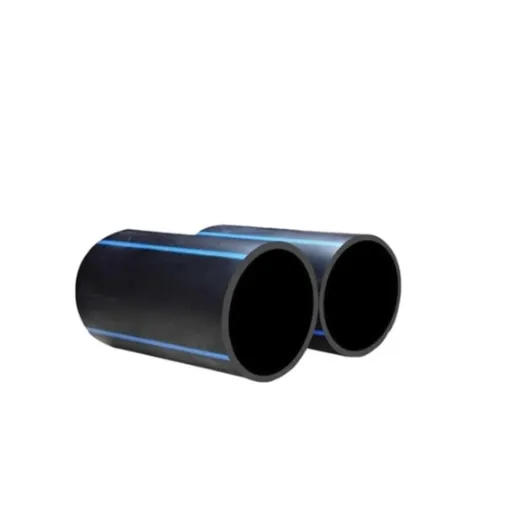Being durable, versatile, and economical, HDPE pipes are the very lifeblood of almost every industry. Their working efficiency is heavily dependent upon the conditions environment, especially with temperature changes. Temperature limitations and ratings for these pipes should be considered by the engineers, contractors, and decision-makers so as to have the best performance from their systems and avert costly failures. This article explores the scientific principles of HDPE pipe behavior under varied thermal conditions, its thermo-resistance, distress conditions, and practical information in considerations to design for alleviating any doubt in determining the right pipe for your application. Whether designing water distribution, industrial pipelines, or geothermal ones, this will help provide you with the core knowledge to begin making informed choices.
Overview of HDPE Pipes
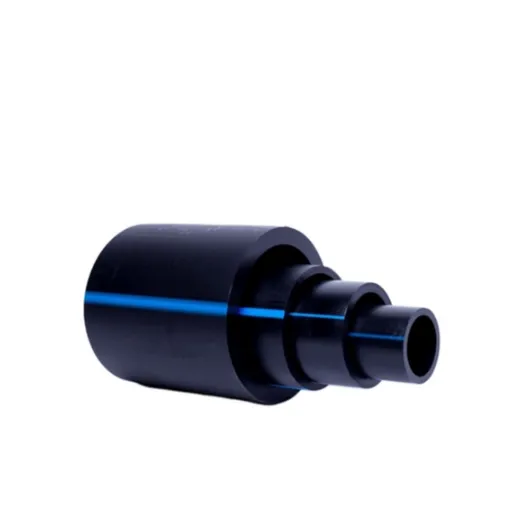
What is HDPE Material?
High-density polyethylene is a thermoplastic polymer that is petroleum-based and known for its strength-to-density ratio. This material is composed of polymer chains stacked close together, which confer strength, flexibility, and impact resistance to the polymer. Generally, high-density polyethylene polymers are utilized in very demanding environments that require due to their unusual mechanical and chemical properties.
HDPE refers to corrosion-resistant, chemical-resistant, and UV-resistant, and is, therefore, an ideal material for pipes under variable pressure, temperature, or exposure to harsh elements. Its resistance to crack initiation and propagation under cyclic loading conditions is a further warranty for its long-term reliability. They will ensure the structural performance of HDPE pipes while also being lightweight and easy to handle.
What makes this material particularly useful in the pipeline industry is its cheapness, weldability, and recycling potential. HDPE pipes are used in water distribution, gas pipelines, sewage systems, and even geothermal energy work. With this environment-friendly nature, being quite flexible and high performing all lend determination for this to be a key solution toward today’s infrastructure.
Properties of HDPE
High-density polyethylene (HDPE) is a thermoplastic polymer with a unique combination of strength, flexibility, and chemical resistance. These properties give rise to a relatively high tensile strength, which enables it to resist heavy pressure and stress without any deformation. Therefore, it is highly apt in applications where long-life materials are needed, such as pipelines and storage containers.
Key HDPE Properties:
- High tensile strength and pressure resistance
- Excellent chemical and corrosion resistance
- Low moisture absorption rate
- Excellent barrier qualities
- 100% recyclable material
The other major feature is the resistance of HDPE to chemicals and corrosion. It does not react with numerous substances, including acids, alkalies, and organic solvents. This would pose a hurdle in using these materials in an environment where there tends to be constant exposure to chemicals. Furthermore, HDPE has a low moisture absorption rate and excellent barrier qualities to prevent leakage and contamination, which can shed light on its usage in water and gas distribution services.
HDPE is being promoted for environmental sustainability. The materials can be recycled entirely and made into new products without a loss in integrity. Furthermore, from the installation down to its occasion of use, it is a light material that will reduce transport costs and environmental impact. The combination of these advantages makes HDPE less costly and a preferred choice, whereby high performance in industries is required while still transitioning according to environmental standards.
Applications of HDPE Pipes
HDPE pipes are very versatile and have been adopted by many industries because they are durable, flexible, and corrosion-resistant. Below are five key applications of HDPE pipes with detailed explanations and data to demonstrate their effectiveness:
💧 Water Supply Systems
For water supply systems, HDPE pipes are widely used because of their renowned resistance to corrosion and leaching by chemicals. They can withstand the pressure of water up to 16 bars and can exceed a lifespan of 50 years if well maintained, making them nearly never to be replaced. A smooth inner surface of pipes allows for minimum friction loss so that water flows even through it.
🌾 Agricultural Irrigation
Being flexible and light in weight, HDPE pipes are excellent for irrigation systems in agriculture. Free movement across uneven terrains makes these pipes apt for use with drip irrigation systems. It is reported that their use increases water efficiency up to 30%, thus making it a cost-effective solution for farmers.
🚿 Sewage and Drainage Systems
Resistant to chemical corrosion and abrasion, HDPE pipes are used to carry wastewater and sewage. They are non-brittle and can carry enormous load conditions, which is quite necessary for the underground drainage system. They are less prone to leakage, thereby lowering the contamination risk and maintenance cost.
⛽ Gas Distribution Network
Due to their strength-to-weight ratio and impermeability to gases, HDPE pipes are used to distribute natural gas and LPG. They can take internal pressures of up to 100 psig while leaving a temperature of plus or minus 40°F to 140°F, assuring reliability in any climate.
🏭 Industrial Applications
HDPE pipes are widely used in the industry to carry chemicals, slurry, and other industrial effluents. They stand against those chemicals for a long time, even in those environments that are highly aggressive. Mining applications require the transport of abrasive materials; they have been found useful, helping in reducing downtime as well as operational costs.
Here, they show the versatility of HDPE pipes, making them a critical ingredient for modern infrastructure and industrial systems.
Temperature Ratings of HDPE Pipes
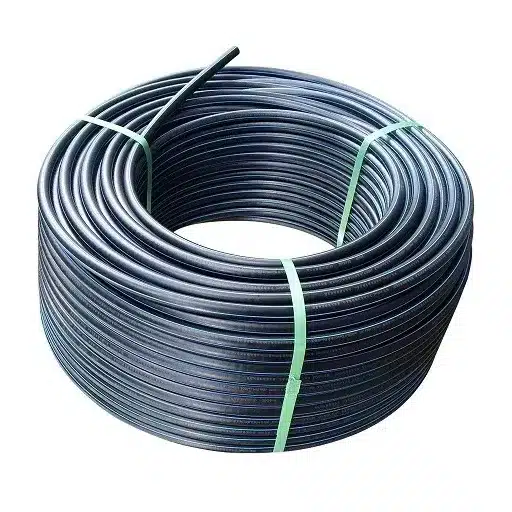
Understanding HDPE Pipe Temperature
The temperature performance of HDPE pipes is critical for specifying their application and service life. These pipes are ideally thermally resistant, operating between the temperatures of -40°F and 140°F (-40°C and 60°C). Some formulations of HDPE may, however, extend these ranges for operating temperatures. For instance, certain high-grade materials can sustain a temperature of up to 180°F (82°C) for a short duration without compromising their integrity significantly.
Temperature changes impact the material’s tensile strength and affect its pressure rating. Elevating the temperature lowers HDPE’s pressure rating, which ought to be considered when designing the system. At lower temperatures, the material raises concerns about impact resistance and possible brittleness during handling or installation in extreme cold, as it stiffens.
Based on the consistent performance of HDPE over a wide range of temperature conditions necessary for engineering purposes in industrial and infrastructure projects, various tests are employed, including ASTM D2837 and the design of the hydrostatic basis (HDB), which assures that particular HDPE grades meet either short- or long-term requirements under thermal stress. Hence, these factors stress the importance of considering environmental and operating temperature conditions during the selection and installation of HDPE pipes.
Temperature Limits of HDPE Material
| Temperature Range | Fahrenheit | Celsius | Material Behavior |
|---|---|---|---|
| Minimum Operating | -40°F | -40°C | Maintains rigidity without brittleness |
| Standard Operating | 140°F | 60°C | Optimal performance under continuous load |
| Short-term Exposure | 180°F | 82°C | Limited exposure without significant degradation |
| Melting Point | 248-266°F | 120-130°C | Material begins to soften and deform |
HDPE possesses a rather wide range of thermal stability. Hence, HDPE is considered when the temperature resistance application is considered. Generally speaking, HDPE can remain in its actual rigid phase without getting brittle to temperatures of about -40°F (-40°C). HDPE at elevated temperatures can remain in its actual plastic condition and can provide a load of 140°F (60°C) under a continuous load. Some grades can withstand 180°F (82°C) short-term spike exposures abusive to me, provided the stresses are within permissible limits.
Thermal performance characteristics of HDPE are highly dependent on the molecular weight and density. Usually, a higher molecular weight improves thermal resistance for the material. Such characteristics are key to the durability of HDPE in applications that experience cyclic or prolonged thermal variations. In piping systems, excessive heat accelerates creep deformation, whereas excessive cold temperatures may lead to toughness in the pipes; these effects are generally tempered by proper installation procedures and periodic performance evaluation under service conditions.
Adherence must be made to the prescriptive guidelines in all circumstances to have an HDPE unit function when performing under thermal conditions. Testing can, however, include heat treatments followed by Differential Scanning Calorimetric analysis and any other thermal tests to determine the behavior of the product of HDPE under the varying temperatures for standardization and archetypal application according to the industry standards.
Different Temperature Ranges for HDPE
⚠️ Important Temperature Considerations
From the Pure Polymeric product point of view, it exhibits a wide range of application temperatures, thus fitting into industrial or commercial applications. Generally, the operational temperature between which HDPE maintains its mechanical properties successfully ranges from -40°F (-40°C) to 176°F (80°C). Apart from slight discoloration with longer exposure times, the polymer will soften during prolonged temperature exposure to the upper extremes of its range (near 176°F), thus reducing tensile strength.
From -40 to sub-zero, HDPE tends to be brittle unless it has additives that improve its properties for cold climate operation. Thermal properties of HDPE are largely determined by the crystalline structure, melting point, and molecular weight. Its melting point is typically in the range of 248°F (120°C) to 266°F (130°C), with degree grades modifying this temperature on the basis of the processing method used. Selection of materials and design specifications for higher thermal load applications, such as piping systems for hot fluid, is thus very important so that the risk of deformation can be minimized.
The thermal parameters of plastic have recently been made flexible by advancements in HDPE grading. Cross-linked HDPE, or PEX, for example, is able to give improved thermal resistance so it can even be used in applications such as underfloor heating, which are ordinarily outside the scope of HDPE. All evidence suggests that, by sticking to the grade of HDPE recommended for the thermal environment, critical application life and efficiency are assured.
Extreme Temperature Performance
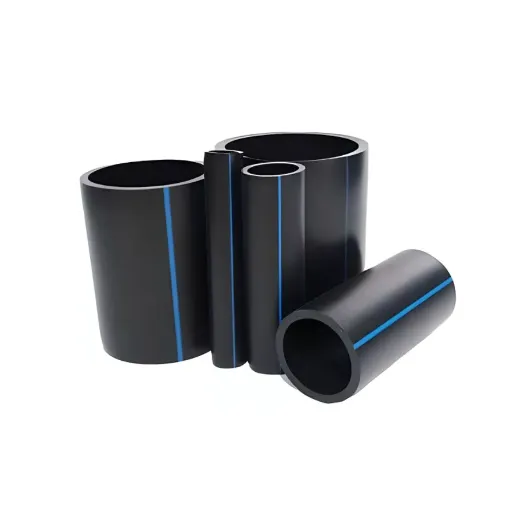
Performance in High Temperatures
🌡️ High-Temperature Performance Summary
- Standard HDPE: Maintains integrity up to 120°F (49°C)
- Heat-stabilized HDPE: Can operate up to 248°F (120°C)
- Cross-linked HDPE (PEX): Best thermal resistance with dimensional stability
High temperatures constitute quite a challenge for polymeric materials like HDPE. Ordinary grades of HDPE hold structural integrity roughly up to 120°F (49°C), followed by thermal degradation getting in the way of mechanical properties with growing intensity. However, in view of polymer modification, heat-stabilized HDPE grades have emerged and can work assuringly in much higher temperature atmospheres, i.e., up to 248°F (120°C) for some chosen applications. Normally, these modifications include additives that provide oxidative stability and curb cracking caused by thermal stresses.
For example, industries incorporating HDPE piping systems into high-temperature fluid transport environments, such as geothermal energy or industrial chemical processing, derive benefits from these specialties, having low creep and greater thermal resistance. These factors, i.e., reduced creep and increased resistance to thermal softening, are beneficial for these specialties. In fact, empirical data have shown that cross-linked HDPE (PEX) has the best thermal resistance and maintains dimensional stability during extended exposure to elevated temperatures. These adaptations effectively allow for the application of HDPE in areas previously covered by materials like metals or high-temperature-resistant composites.
Knowing the high-temperature environment a material will be subjected to and the specific thermal load conditions will help in its accurate selection. The time of exposure and any possible synergistic effects that can affect its performance and longevity must be considered; these may be due to environmental effects such as UV radiation or chemicals.
Performance in Freezing Temperatures
❄️ Cold Weather Performance Benefits
- Maintains structural integrity down to -60°C (-76°F)
- Excellent flexibility in freezing conditions
- No decrease in tensile strength or impact resistance
- Low thermal conductivity prevents freeze damage
HDPE presents outstanding resistance to freezing weather and is, hence, considered a versatile candidate in cold climatic applications. It maintains its structural integrity and flexibility, although such environments could range all the way down to -60°C (-76°F). Molecularly, its structure discourages any susceptibility to brittleness or stress fracturing, which ordinarily a less-durable plastic would experience under such conditions.
In evaluating HDPE from the point of view of sub-zero environments, one should note that there is no decrease in tensile strength or impact resistance, making the material suitable for critical systems such as piping, storage tanks, and liners by assuring its reliability. Further, the material’s low thermal conductivity increases its ability to resist freeze-related damage by restricting heat flow from the contents it encloses.
Contraction via thermal shrinkage at extreme cold temperatures needs to be considered for performance optimization in HDPE design. Proper installation practices can be adapted to mitigate these influences, including the use of expansion joints or flexible couplings. Laboratory tests have time after time confirmed the material’s durability in a cyclic freeze-thaw setting, which further strengthens its suitability for long-term use in severe winter settings.
Case Studies of HDPE in Extreme Conditions
🏔️ Arctic Pipeline Systems
The construction of pipeline systems in Arctic regions is a major application of High-Density Polyethylene (HDPE). Lying within these areas is a prolonged exposure to sub-zero temperatures and considerable thermal transitions. HDPE pipelines have shown undoubted performance, with field data showing that these pipelines have stood temperatures as low as -40°F (-40°C) with insignificant degradation. The flexibility of the material mitigates stress fractures induced by ground movements due to freezing and thawing cycles, thereby preserving the integrity of vital infrastructure. Moreover, resistance to abrasive wear in slurry pipelines has provided HDPE with an added advantage during material transportation in icy tundra conditions.
🌊 Flood Barrier Systems in Coastal Areas
HDPE has proven to be an effective solution for flood protection systems in coastal areas prone to extreme weather events. Research studies have established the fact that HDPE panels maintain structural and chemical integrity when in contact with salt water or high humidity for an extended time period. These studies provide evidence that HDPE barrier systems maintain over 90% of their tensile strength after 10 years of continuous exposure to marine environments at high intensity. They therefore provide crucial protection to vulnerable areas from storm surges and sea-level rise.
⛰️ Alpine Retention Tanks
Retention and storage tanks made of high-density polyethylene are widely used in the high Alpine sites, where temperatures oscillate tremendously between day and night. Laboratory simulation, as well as observations on-site, have proved that HDPE tanks could withstand repeated freeze-thaw cycles without cracking or leaking. This property has enabled HDPE to become the material of choice in water and chemical storage, thus ensuring the operation does not fail under extreme climatic stressors.
These case studies go to show that HDPE can stand the test of extreme environmental conditions, thereby securing its position as a material of choice when building critical infrastructure in difficult settings.
Factors Affecting HDPE Pipe Durability
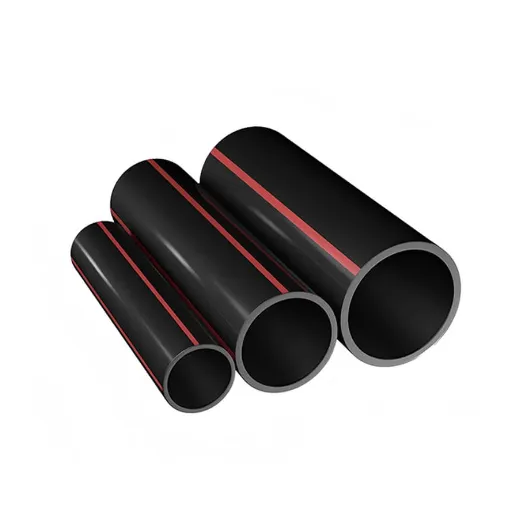
Environmental Conditions
The constancy of HDPE pipes is largely influenced by their environmental installations and the prevailing environmental conditions pertaining to their usage. Variations in temperature, UV radiation, type of soil, and chemical applications urgently intervene in defining the working life and efficiency of HDPE systems. In places with high variations of temperature, HDPE’s advantages of flexibility and low thermal expansion work in favor of it to resist freeze-thaw cycles more than any other material.
🌟 Environmental Resistance Features
- UV Resistance: Contains UV stabilizers like carbon black
- Chemical Compatibility: Resists acids, bases, and hydrocarbons
- Soil Interaction: Maintains integrity under heavy loads
- Temperature Flexibility: Low thermal expansion coefficient
Prolonged UV radiation can act upon the degradation of certain materials; however, because HDPE pipes contain UV stabilizers such as carbon black, they resist photodegradation. Thus, they find application in exterior installations with a wide range of sun exposure. The interaction between the HDPE pipe and its ambient soil is an important factor to consider. Hence, trenching and backfilling need to be done in a manner that reduces mechanical stress to prevent long-term deformation under heavy loads.
Chemical resistance is one more major advantage of the HDPE pipe. Their ability to withstand corrosion over exposure to a wide range of chemicals is extensive and includes acids, bases, and hydrocarbons, making these pipes a prime candidate to be used in industrial and environmental applications, including wastewater systems and mining operations. HDPE mitigates the impact of harsh environmental conditions and hence serves well to retain the structural integrity and operational efficiency for decades, assuming correct installation and maintenance procedures are followed.
Pressure Levels and Their Impact
The performance and longevity of HDPE pipes are functions of the operating pressure level being applied to them. Higher pressure than the rated one can lead to undue stress, deformation, or failure of the pipeline system, while within pressure thresholds, pipe systems maintain their structural integrity and can be relied upon. The following is an elaborate explanation of pressure types and their influence on the pipes:
| Pressure Type | Description | Typical Range | Impact on System |
|---|---|---|---|
| Nominal Pressure (PN) | Maximum pressure at 20°C during expected life | PN 6 to PN 25 | Defines basic capacity |
| Operating Pressure (OP) | Pressure during normal working conditions | ≤ Nominal Pressure | Must avoid overstressing |
| Surge Pressure | Temporary pressure from flow changes | Can exceed PN | Requires design consideration |
| Temperature-Adjusted | Pressure rating at elevated temperatures | 50% derating at 40°C | Critical for hot applications |
| Hydrostatic Test | Testing pressure for system verification | 1.5 times nominal pressure | Ensures system integrity |
Considering any one of these pressure considerations helps guarantee the safe and efficient working of HDPE pipe systems. However, long-term operational success and system reliability critically depend on the generation of each.
Long-Term Usage Considerations
To ensure the longevity and utmost performance of HDPE piping systems over long periods, several parameters must be thoroughly evaluated and controlled. Among them, the most important are environmental stress cracking resistance, thermal expansion, and creep of the material under sustained operating pressure.
🔬 ESCR – Environmental Stress Cracking Resistance
ESCR is a deciding factor for the longevity of HDPE pipes, especially in chemically aggressive environments. HDPE resistance to stress cracking in the presence of environmental conditions such as UV, chemicals, and temperature changes will greatly determine the operational lifetime of the piping system. Higher ESCR-rated materials should be considered for installations under such adverse conditions.
📏 Thermal Expansion and Contraction
For HDPE pipes, natural movement is allowed either by expansion or contraction due to temperature variation. Unless this phenomenon comes into consideration during installation, repeated thermal cycles can cause joint misalignment or induce stresses in the fittings. Prevention of such long-term thermal stresses includes means of expansion control, such as expansion loops, anchors, and restraints.
⚖️ Material Creep Under Sustained Pressure
HDPE is viscoelastic in nature and undergoes creep deformation under continuous loading. This must be considered in the design for pipe ratings that are acceptable and maximum operating pressure allowed is less than the rated limit; regular monitoring, following, and adhering to standards such as ISO 9080 assures the pipe’s ability to operate for an extended period under pressure without degrading its mechanical properties.
🔧 Maintenance and Inspection
In consideration of performance over a long time, preventive maintenance strategies shall have to be adopted. Periodic ultrasonic testing, visual inspections, or pressure recording during any phase of the operation can detect the earliest traces of wear, damage, or deformation; with this information, small troubles may be detected or avoided in order to prevent big failures, thereby prolonging a system’s life.
Along these lines, applying these principles coupled with the usage of new generation HDPE materials with better durability properties would make engineers capable of designing and maintaining systems that can withstand demanding operational environments while keeping their degradation risk minimal over time.
Ensuring Optimal Performance of HDPE Pipes
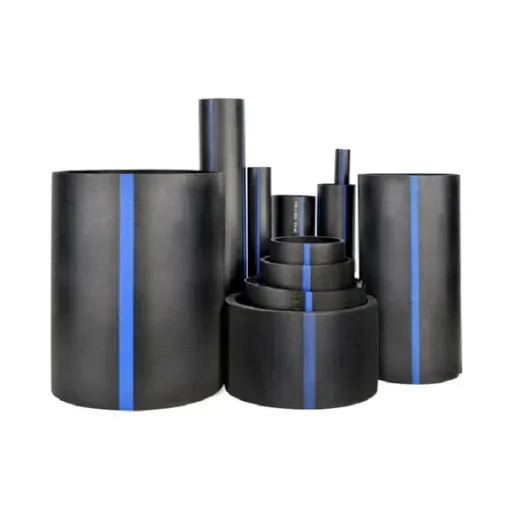
Joining HDPE Pipes for Temperature Resistance
Temperature-related performance aspects of high-density polyethylene pipes largely depend on the joining methods used. Proper joining methods provide the pipe network with the highest possible thermal resistance whilst ensuring structural integrity.
From all the joining methods, fusion welds, especially butt fusion, are most commonly applied to create strong, durable joints. The pipe ends are heated; the heating is removed before joining, and controlled pressure is applied so that the two pieces are united into one homogenous joint that can withstand temperature variations, along with internal pressure changes.
🔥 Butt Fusion Welding
- Creates homogenous joints
- Withstands temperature variations
- Handles internal pressure changes
- Most commonly used method
⚡ Electrofusion Joining
- Precision and reliability-focused
- Embedded heating elements
- Uniform heat distribution
- Consistent performance
Electrofusion joins are also a ready alternative when precision and reliability are important. Here, heating elements are embedded in the special fittings, ensuring uniform heat distribution and formation of tight bonds. Tests show the joints created by electrofusion resist thermal stresses remarkably, whilst remaining highly consistent in performance within a broad temperature range.
Material selection is yet another important consideration, as advanced grades of HDPE with better thermal stability form reliable connections under extreme temperature applications. An engineer must take into consideration expansion and contraction characteristics in the design of the pipeline by providing expansion loops or flexible joints to relieve any stress that may occur because of thermal cycles. These strategies contribute to a strong connection and eventually increase the service life of HDPE piping systems under high-temperature and low-temperature conditions.
Best Practices for Installation
🏗️ Installation Excellence Framework
- Site Assessment: Evaluate environmental constraints, soil conditions, temperatures, and UV exposure
- Fusion & Welding: Use certified equipment with exact manufacturer compliance
- Quality Control: Implement stress testing and hydro/pneumatic pressure tests
In order to ensure HDPE piping systems last for a long time and work very well, their installation has to be meticulously planned and executed under the guidelines of technical specifications. Under any circumstance, I would always recommend that a site assessment be conducted to establish any environmental constraints, such as soil conditions and temperatures, plus the level and angle of UV exposure. These factors will govern the selection of materials and the jointing techniques used during installation.
I further stress a fusion and welding method of the highest level, as the joints’ composition comes first with regard to the entire system. The use of certified equipment, with exact compliance to the manufacturer’s specifications, affords quality welds that last. For example, consider that butt fusion machines must be calibrated, whereas with electrofusion fittings, the surfaces need to be clean and free from contaminants for a sound connection to be established. Even the smallest shortcuts in these strict systems can jeopardize the entire system.
Lastly, I advocate for the inclusion of quality control measures throughout installation. Stress testing the system after assembly, employing hydro or pneumatic pressure tests, reveals any weaknesses before commissioning. I foresee HDPE installations exhibiting exceptional performance, if these very best standard working practices are implemented from meticulous site preparation through to precision in jointing processes and finally, quality assurance checks, in even the harshest of environments.
Maintenance Tips for Longevity
🔧 Comprehensive Maintenance Strategy
For the maintenance of HDPE systems for the longest operational life, a strict schedule and systematic maintenance programme need to be followed; these include periodic visual inspections to detect early signs of surface defects such as cracks, abrasions, or deformation occurring in particular at joints and weld interfaces.
👁️ Visual Inspections
- Check for surface cracks and abrasions
- Focus on joints and weld interfaces
- Detect early signs of deformation
- Schedule regular inspection intervals
🔬 Non-Destructive Testing
- Ultrasonic testing for critical components
- Pressure recording during operation
- Check for erosion under operating pressures
- Monitor performance trends over time
🛡️ Environmental Protection
- Protect from UV exposure
- Shield from aggressive chemicals
- Use compatible cleaning materials
- Maintain protective coatings
🌍 Underground Systems
- Monitor soil structure around pipelines
- Prevent undue stress from soil shifting
- Calibrate embedded sensors regularly
- Keep updated maintenance logs
Any other external factors that may induce degradation should be checked. For example, prolonged exposure to UV rays or contact with an aggressive chemical. Hence, protective coating or shielding has to be used if the HDPE system is installed in locations exposed to excessive sunlight or corrosive elements. Cleaning should be carried out using materials and chemicals compatible with HDPE to remove residues that impede flow or affect performance.
For underground systems, the soil around the designed pipeline must maintain its structure without inflicting undue stress or shifting on the pipeline. Periodically calibrating the embedded sensors, if any, will ensure operation precision and early detection. Also, keep updated maintenance logs for analyzing performance trends over time to take out proactive measures that may help avoid failures from turning into major issues. When these precise data-driven guidelines are followed, HDPE installations shall retain a reputation for unusual durability and reliability far beyond their expected service life.
Frequently Asked Questions (FAQ)
❓ What is the temperature rating for HDPE pipes?
The temperature rating for HDPE pipes means the maximum and minimum temperatures at which the HDPE pipes can safely operate without any diminution in their working integrity. Generally, HDPE pipes have a maximum temperature rating for operation of about 140°F (60°C) and can withstand various temperature conditions depending on the grade of material used and the wall thickness.
❓ How does wall thickness affect temperature rating on HDPE pipe?
The wall thickness of an HDPE pipe plays a very crucial role in the temperature rating. The thicker the wall, the better the pressure resistance, and accordingly, HDPE piping systems will have a long life at extreme temperatures. Therefore, choosing the right wall thickness depending on the required area of application and ambient temperature is of prime importance.
❓ Are there limitations of HDPE pipes in extreme temperature conditions?
HDPE pipes do have some temperature limitations. HDPE pipes are known to be more temperature-resistant than PVC pipes; however, they may turn brittle at low temperatures and at high temperatures. So it is very important to consider the temperature versus pressure in the determination of HDPE pipes for an application.
❓ What are the factors for HDPE piping systems to attain optimum performance and longevity?
To ensure optimum performance and longevity, several factors may work for HDPE piping systems, such as the right grade of HDPE, installation practices such as HDPE butt fusion, and working within the specifications given by the manufacturer in terms of pressure and extremes of temperature. Also, regular inspections and maintenance have an equal potential to increase the life expectancy of these systems.
❓ Yet, can HDPE pipes resist temperature changes?
Yes, HDPE pipes can tolerate temperature fluctuations better than many other pipe materials, including PVC. However, rapid or significant temperature changes may still affect the structural integrity of these pipes. Use HDPE pipe and fittings that are suitable for temperature variations expected in the application.
❓ How can advances in HDPE technology improve temperature resistance in pipes?
The use of advances in HDPE technology has led to the manufacture of quality HDPE materials with better temperature resistance. Some of these advances involve improved molecular structures for better performance at extreme temperatures, both high and low, so that HDPE pipes may remain intact within a larger temperature range.
❓ What to consider when choosing HDPE pipes for my project?
When selecting HDPE pipes for a project, you would consider the application involved, pipe sizing, working pressure, and pollution of temperature in the environment. You would also ensure the right HDPE grade is chosen so that the temperature rating and pressure requirements of the system are met.
❓ But how do HDPE pipe fittings affect temperature performance?
HDPE pipe fittings are expected to be rated for temperature similarly to pipes. Hence, properly installed HDPE fittings, such as those in HDPE butt fusion, ensure that the joints resist the same temperature and pressure conditions imposed on the pipe material, crucial for the piping system performance.
❓ What relevance would the ambient temperature possess in HDPE pipe applications?
Ambient temperature plays a vital role in how an HDPE pipe works and its lifetime. By understanding the ambient temperature, one can decide on the HDPE pipe material and the installation practices needed. It also affects the hydrostatic pressure ratings, depending on the other pressure resistance of the piping system.
❓ How does temperature inclusively affect the life of HDPE pipes?
Extreme temperatures affect the life of HDPE pipes by inducing stress and deformation. At elevated temperatures, HDPE tends to soften. The opposite is at low temperatures: it becomes brittle. Hence, it is imperative to select the right grade of HDPE along with installation methods to maintain the pipe’s durability at par with temperature extremes.
References
- Field Performance Analysis of Steel-Reinforced HDPE Pipes
This study discusses the performance of HDPE pipes under different conditions, with temperature being considered as one of them. - Quality Assessments of High-Density Polyethylene Pipes
The paper discusses the quality and performance of HDPE pipes, including their behavior under adverse temperatures. - Testing and Repair of Polyethylene Natural Gas Distribution Pipe
This thesis exploresthe hydrostatic design basis (HDB) of HDPE pipes, including their performance at elevated temperatures. - Comparison Between PE 4710 and PE 100 HDPE Materials
This report compares different HDPE materials and pressure ratings thereof, tested at constant temperatures. - Evaluation and Development of Structurally Enhanced PVC Water Pipe
As applied to PVC, the dissertation brings out comparative perspectives of pipe materials, including HDPE.



